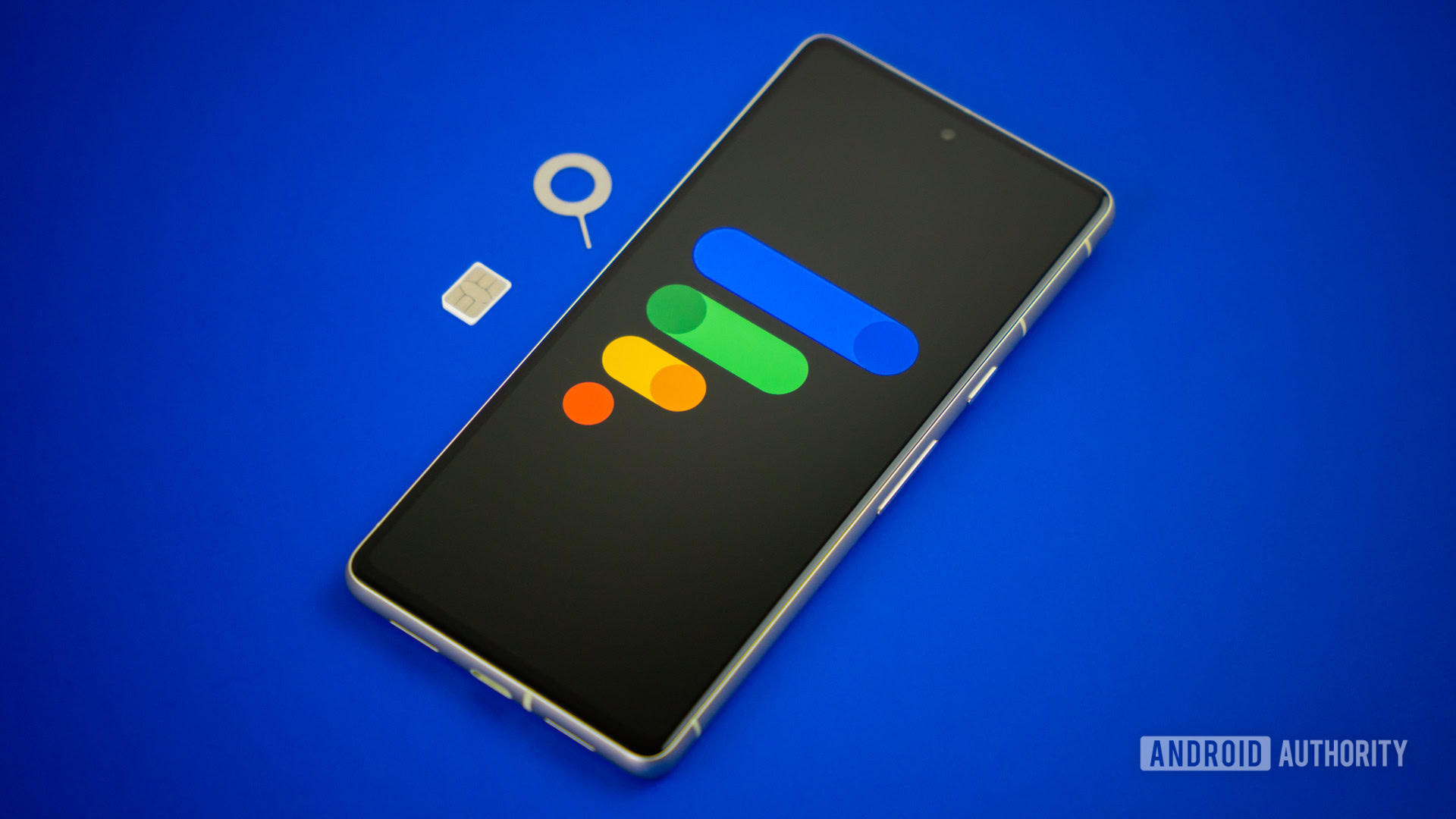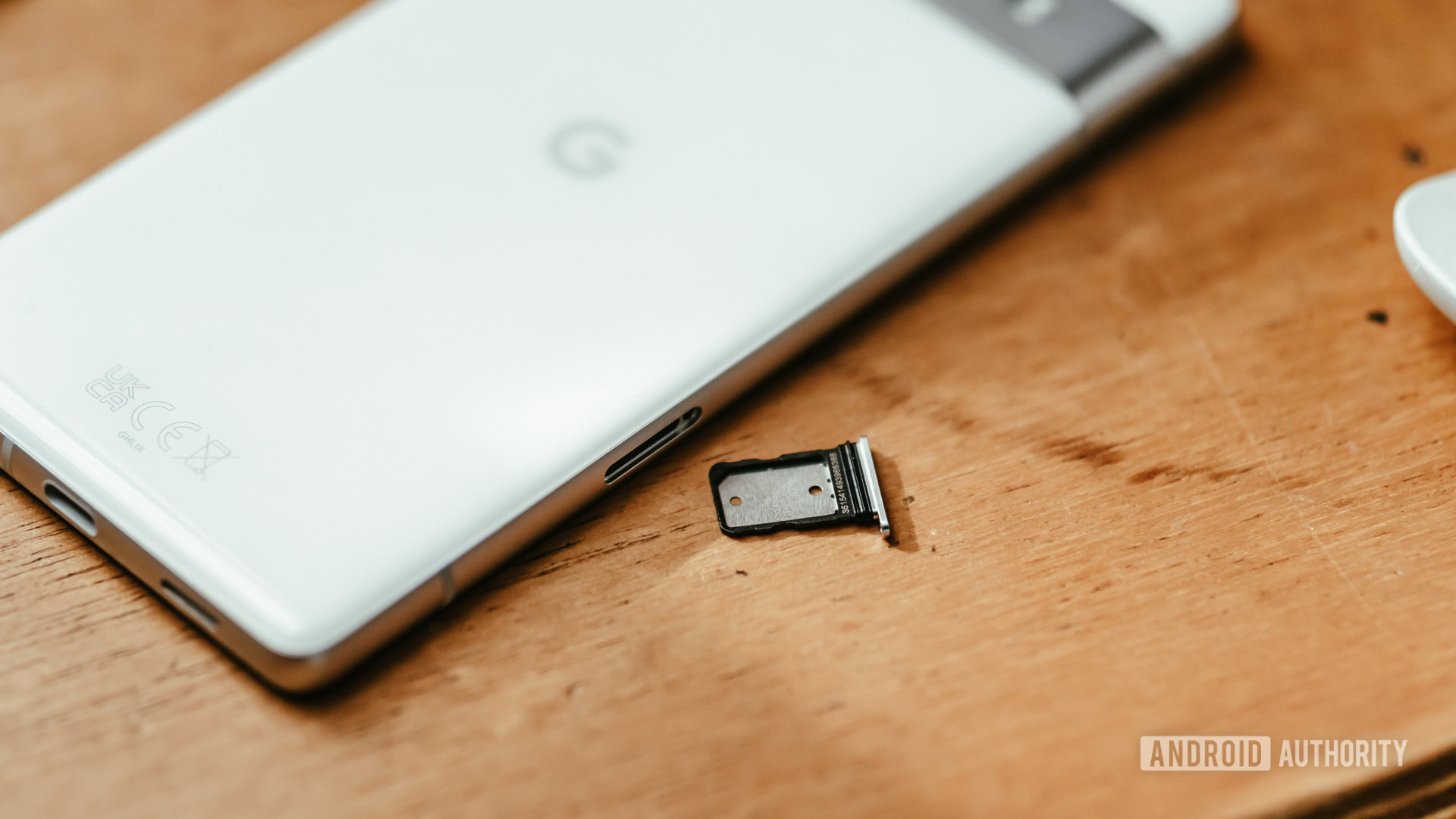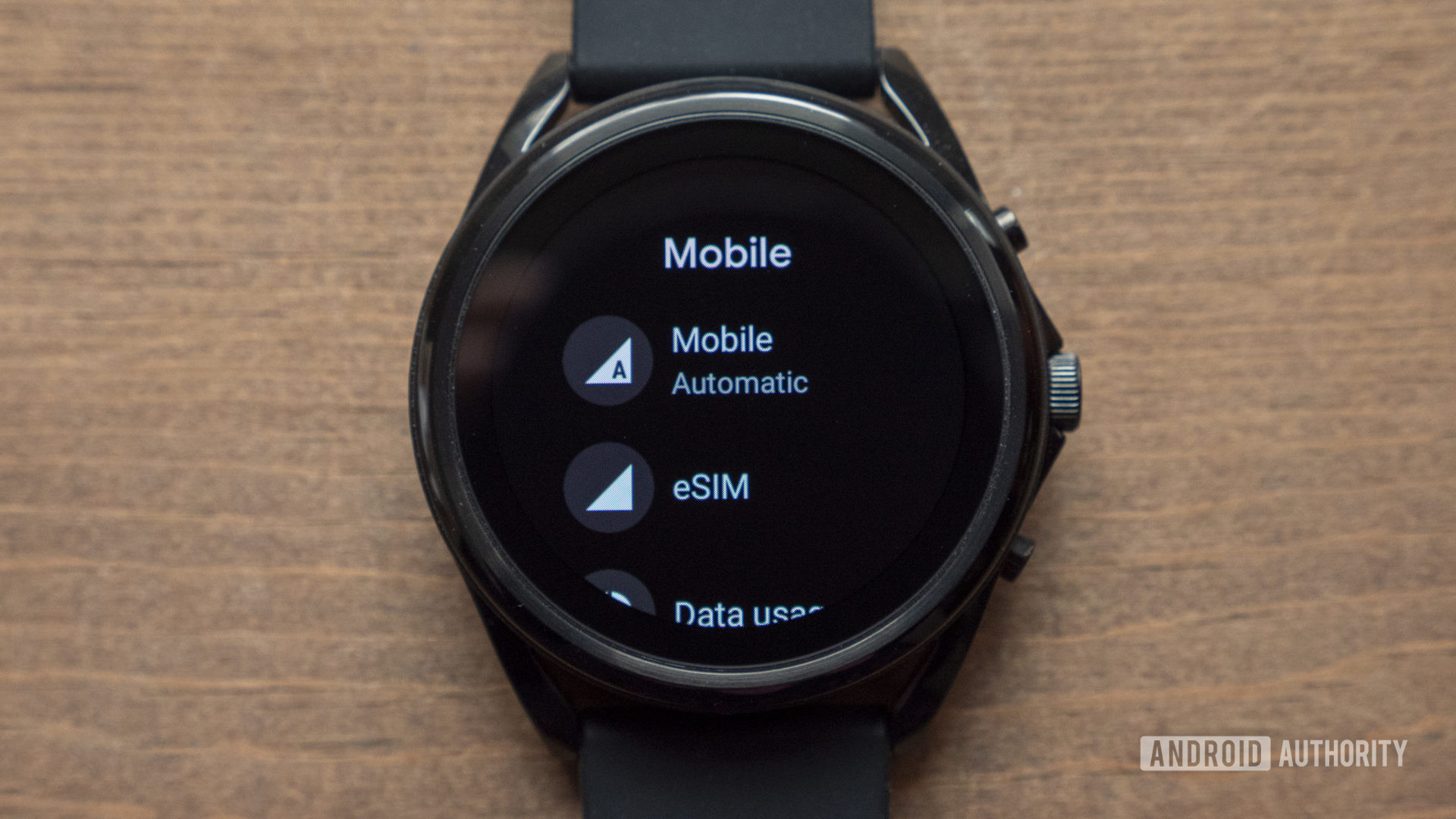Affiliate links on Android Authority may earn us a commission. Learn more.
eSIM vs physical SIM: What are the pros and cons of each?

If you’ve ever upgraded your phone, you likely know what a SIM card is and what it’s for. In short, a SIM card is a small chip that lets you connect to your carrier’s network. While physical SIM cards are still the most common type, there’s a more convenient alternative that is quickly rising in popularity — eSIM.
An eSIM is a virtual SIM card that you can set up with nothing more than a Wi-Fi connection, provided you have a compatible phone. In this article, we take a look at eSIM vs physical SIM to explain the differences, as well as the pros and cons of each.
What’s the difference between eSIM and a physical SIM card?
A modern SIM card is pretty small, but it’s still an actual physical thing you can remove from your phone. An eSIM does away with this by embedding the SIM chip into the phone so you can’t remove it. When you wish to switch carriers, you simply activate the phone through the carrier of your choice, and it will update your eSIM so it can connect to the network. It will also automatically disconnect any other devices previously connected to eSIM.
Most phones that support eSIM also have a physical SIM slot for those who prefer to stick to a physical card, though there are a few exceptions, including the US versions of the iPhone 14 and iPhone 15. Over time we’ll likely see more phones follow Apple’s footsteps and move past physical SIM, but for now, that’s yet to happen on a large scale.
Learn if the eSIM is right for you
eSIM vs physical SIM: pros and cons

So why go with eSIM over a physical SIM card? There are actually quite a few reasons. Let’s start with the pros and cons of the eSIM:
eSim Pros:
- It’s easier than ever to switch networks — if your network is compatible. Most carriers have an app that will quickly install network information onto an eSIM. The whole process takes minutes and doesn’t require you to go into a physical store to make the switch. Just be aware not all networks support eSIM.
- They make testing multiple carriers much easier. Several carriers now have free eSIM trials that allow users to test out their networks and services before committing. This may be as simple as installing an app and setting up the experience from there.
- Many eSIM phones allow you to have two lines, one of them a physical SIM. Dual-SIM phones have never been very common in the United States, but eSIM has changed this. Many phones allow you to use the eSIM and SIM slot at the same time, giving you the ability to use two numbers on one device.
- You can temporarily change to another network without ordering a SIM card. Find yourself traveling to a new country and don’t have a good international plan with your carrier? You can quickly setup an eSIM line without having to hunt down a physical SIM card. Of course, many countries have limited eSIM support, so it will really depend on where you’re visiting.
- They are better for the environment. There are no plastic cards or shipping materials, which means less waste. Considering the use-and-toss nature of SIM cards, this waste can add up over the years.
- The embedded nature of an eSIM also makes it more secure. It’s much harder to clone a phone’s eSIM card. Additionally, if a thief steals your phone, they could previously remove the SIM so they can’t be tracked and have time to reset the phone. The embedded eSIM can’t be removed, though a determined criminal will obviously find a way to reset the phone anyhow. On the bright side, it gives you a bit more time to potentially track down your device.
eSim Cons:
- Switching phones isn’t quite as easy as before. Switching phones previously took seconds. You simply popped out the SIM and threw it into a new, compatible device. Now you have to install an app or enter eSIM instructions directly. You also have to deactivate the existing device. The whole process is still very fast, but physical SIM cards are still much more convenient here.
- Not all networks support eSIM, especially smaller MVNOs. In the US you’ll find eSIM support on all three major carriers, as well as select MVNOs such as Mint Mobile, Google Fi Wireless, and Telo. But not every network supports it, and you’ll find support will vary depending on the country you are in.
- Many carriers only support eSIM on major phones like iPhone, Samsung Galaxy, or the Pixel series. While more manufacturers are starting to include eSIM not all phones support it. Even if a phone has an eSIM, that doesn’t mean it’ll work with every network. At least in the US, you’ll find only the most popular phones are supported by most carriers.
Although eSIM is a faster, more convenient way to set up a phone to a network, there are still a few advantages to physical SIMs as well. Here are the biggest pros and cons to a physical SIM card:
Physical SIM Pros:
- You can quickly switch phones as your network info is contained in a physical chip. It takes seconds to swap out your SIM card, so it’s easy to upgrade devices. For most, this probably doesn’t matter, but if you constantly change phones for work (ahem), it can be pretty handy.
- Physical SIMs have the widest range of phone and network compatibility. eSIM has much wider compatibility these days, but there are still some limitations. A physical SIM is still the best method if you want to ensure compatibility with the widest range of phones and networks.
Physical SIM Cons:
- A physical SIM can get damaged or lost. An eSIM is not only more secure, but it’s also safe from physical damage. Physical SIMs tend to be pretty hardy, but they do go bad and replacing them isn’t always the most convenient process.
- There are more hoops involved when switching networks. You’ll need to either go to a physical store or get a SIM card mailed to you if you want to switch networks. This is obviously a lot less convenient than downloading an app and following a few prompts.
eSim vs iSim

You might have heard another term, iSIM. Wondering what that is? Just like eSIM, it’s basically an embedded SIM technology. The iSIM is designed with security in mind and is primarily aimed at Internet of Things devices as an alternative to eSIM. It’s possible the technology could come to phones in the future, as the Snapdragon 8 Gen 1 was the first SoC to support the tech. Unfortunately, no carriers support it just yet.
iSIM is still pretty new when it comes to usage in mobile devices, at least. In many ways, it is quite similar to eSIM, but here are the key differences between an iSim vs eSim:
- iSIMs are integrated into the SoC and are, therefore, more secure.
- iSIMs are 98% smaller than eSIM, so they are perfect for small IoT devices.
- They are 50% cheaper than eSIM as they have a simpler design.
- They use 70% less power than an eSIM.
In the future, iSIM might become more common than eSIM, but for now, it’s more of a curiosity than a viable option.
Phones that support eSIM
In 2024, the vast majority of phones sold now include an optional eSIM slot, even budget devices like the Galaxy A14. Typically if your phone is less than two years old, the odds of it supporting eSIM are practically 100%.
Of course you should still do your homework before assuming a device supports eSIM on your chosen network, as some carriers have more limited eSIM support than others.
Should you switch to eSIM now?
If you’re getting ready to switch to a new phone, it isn’t a bad idea to make the move to eSIM. It’s pretty obvious embedded SIM technology is the future, and it’s pretty convenient. Still, if you already have a phone that is set up with a physical SIM, we can’t see any reason to make the switch now.
If you are looking for a new phone, be sure to check out our guide to the best phones. If you’re on a budget also check out our best cheap phone guides. Before you do jump ship, ensure the carrier you use is compatible with the phone brand (or brands) you prefer. Once you activate an eSIM, your existing physical SIM card will be deregistered and can’t be reactivated without getting a new card.